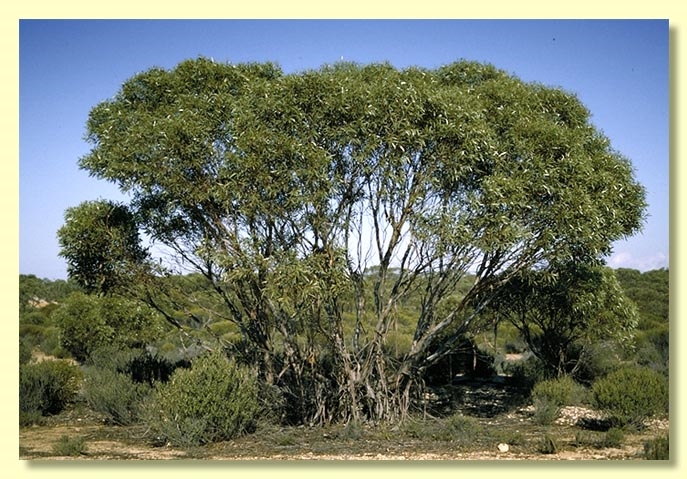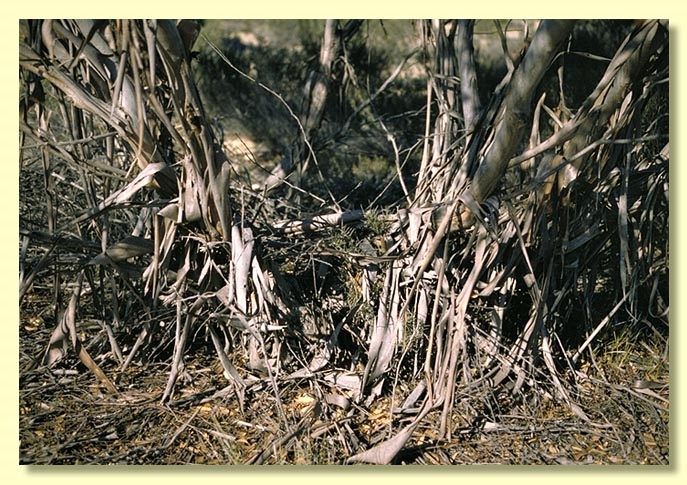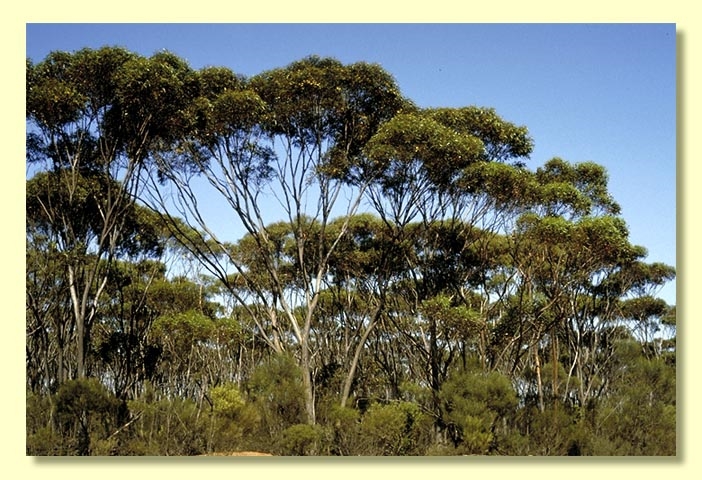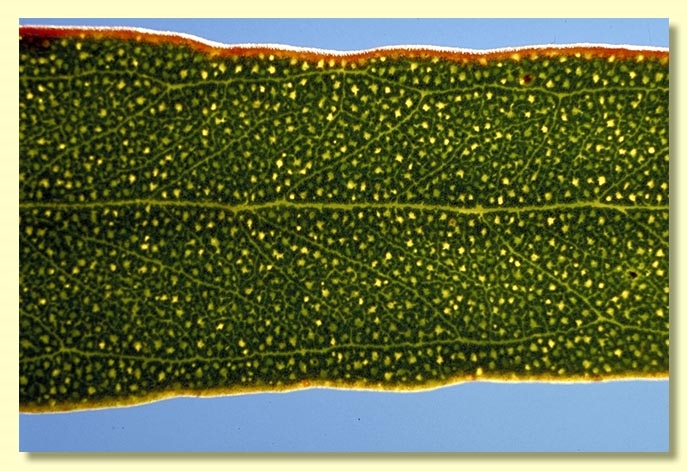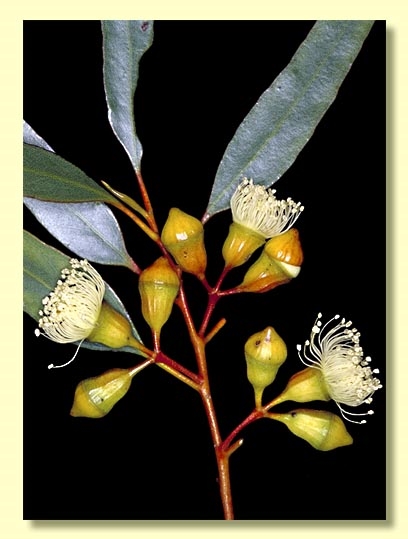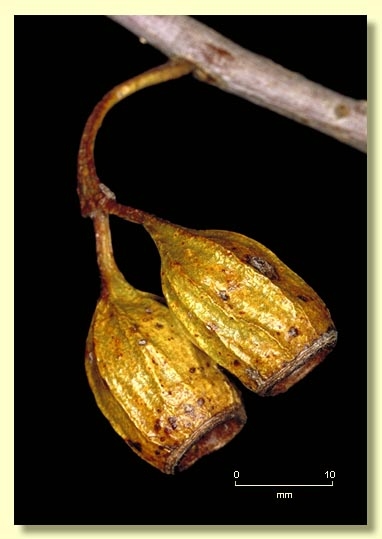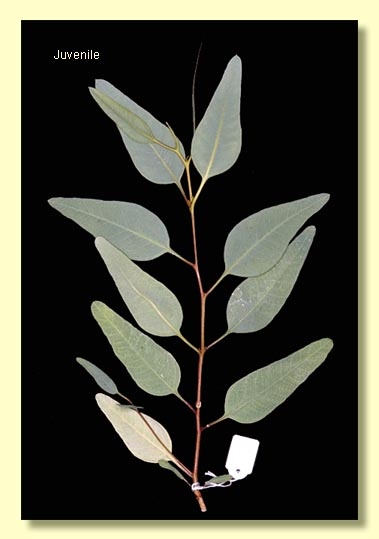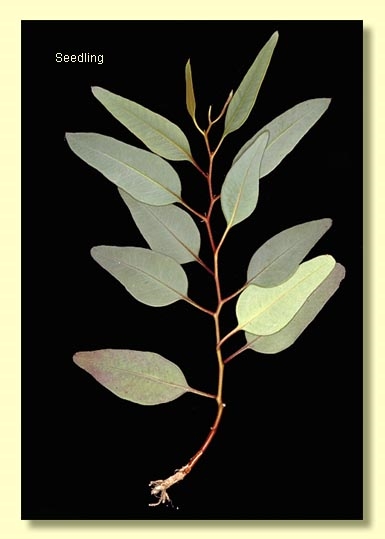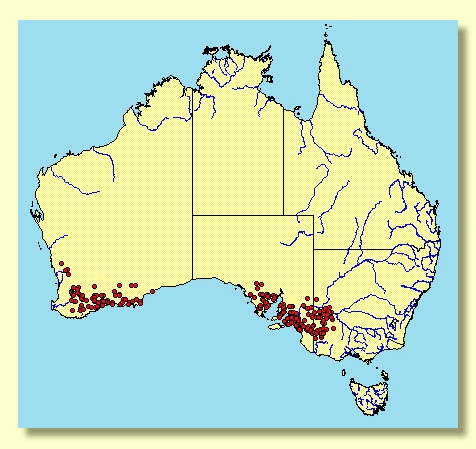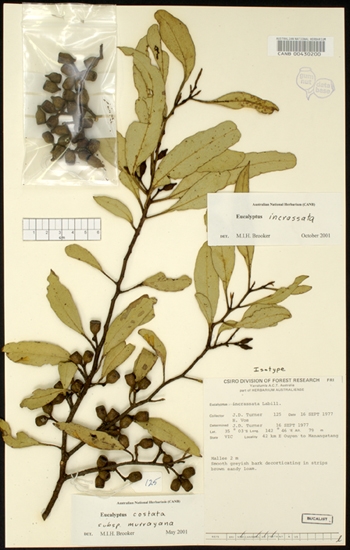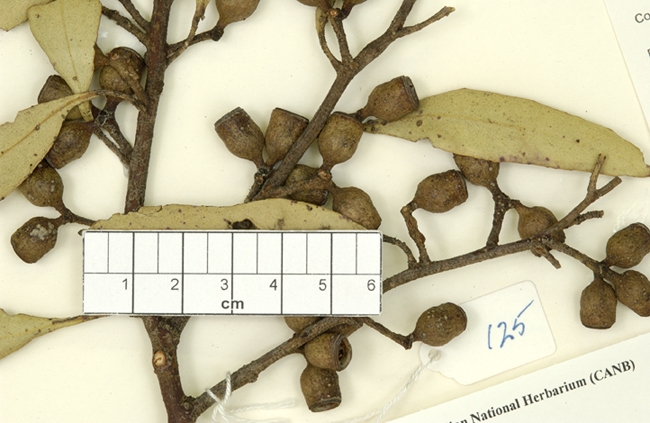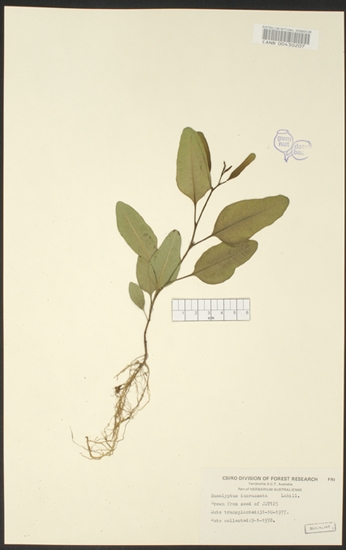Euclid - Online edition
Eucalyptus incrassata
Eucalyptus | Symphyomyrtus | Dumaria | Incrassatae
T: south coast, Australia, J.J.H.Labillardière s.n.; holo: FI; iso: BM, G, LINN, MEL.
Eucalyptus costata F.Muell. & Behr ex F.Muell., Trans. Victorian Inst. Advancem. Sci. 33 (1855) pro parte as to lectotype. T: South Australia: Angaston, Dec. 1848, H. Behr s.n. ; lecto: MEL 1552443; isolecto:K (see K.D.Hill et al, Telopea 9: 267 (2001)).
Eucalyptus incrassata var. costata (F.Muell. & Behr ex F.Muell.) N.T.Burb., Trans. Roy. Soc. S. Australia 71: 150 (1947). E. incrassata subsp. costata (F.Muell. & Behr ex F.Muell.) F.C.Johnstone & Hallam, Proc. Roy. Soc. Victoria 91: 204 (1980). T: Murray Desert, S.A., 1854, F.Mueller s.n.; syn: MEL; other syns (excl. lectotype, H.Behr s.n., above).
Eucalyptus costata subsp. murrayana L.A.S.Johnson & K.D.Hill, Telopea 9: 269 (2001). T: Victoria: 42 km E of Ouyen on Manangatang road, 16 Sept. 1977, J.D.Turner 125 & H.Vos; holo: NSW; iso: CANB, MEL, AD, PERTH.
Bark smooth throughout or with persistent rough grey to brown ribbons on base of stems, sometimes extending for 1–2 m; smooth bark salmon pink to grey-brown or pale grey, sometimes with a few ribbons on the upper branches.
Branchlets with or without pith oil glands.
Juvenile growth (coppice or field seedlings to 50 cm): stems usually rounded in cross-section; juvenile leaves alternate, petiolate, elliptic to ovate, 4–10 cm long, 2–5 cm wide, dull, blue-green, becoming green, glossy at upper nodes.
Adult leaves alternate, petiole 0.8–2.5 cm long; blade lanceolate, 5–15 cm long, (0.8)1–3 cm wide, base tapering to petiole, usually entire but sometimes shallowly and distantly toothed (marginal lenticels), thick, concolorous, glossy, green, side-veins usually greater than 45° to midrib or tending to acute in narrower leaves, dense to very densely reticulate, intramarginal vein parallel to and remote from margin, oil glands intersectional.
Inflorescence axillary unbranched, peduncle angular to flattened, 1–2.8 cm long, buds 7 (rarely 3) per umbel, pedicellate (pedicels 0.1–0.8 cm long). Mature buds oblong to pyriform (1.1–2.3 cm long, 0.5–1.1 cm wide), green to yellow or red-brown, often with longitudinal ribs, scar present, operculum conical to shortly beaked (0.5–1.2 cm long), stamens inflexed, anthers somewhat globoid or cuboid, versatile, dorsifixed, dehiscing by longitudinal slits (non-confluent), style long, stigma tapered, locules 3 or 4, the placentae each with 4 or 6 vertical ovule rows. Flowers creamy white to pale yellow, rarely pink or red.
Fruit usually pedicellate, rarely sessile (pedicels 0–0.8 cm long), cylindrical to barrel-shaped or campanulate often slightly contracted at the top, 0.9–2 cm long, 0.7–1.5 cm wide, ridged, usually ribbed longitudinally, disc descending, valves 3 or 4, enclosed or just below rim level.
Seeds dark grey to black, 2–4 mm long, flattened-pyramidal with conspicuous marginal flange and ribs ascending to hilum which is almost terminal.
Cultivated seedlings (measured at ca node 10): cotyledons reniform; stems rounded to square in cross-section; leaves always petiolate, opposite for 3 to 5 nodes then becoming alternate, ovate-lanceolate, 4–9.5 cm long, 2–4.5 cm wide, dull green but becoming glossy after node ca 8. Lenticels present on margins of some leaves of some seedlings.
Flowering has been recorded in January, February, May, June, July, August, September, October, November and December.
A mallee widespread across southern Australia, from north of Perth eastwards through southern Western Australia, southern South Australia, north-western Victoria to south-western New South Wales as far as the Pooncarie to Balranald area. In South Australia it is absent from the Nullarbor region. The bark is smooth or there is an accumulation of loose, partly shed bark over most of the stems giving an untidy appearance. The adult leaves are glossy green, fairly firm in texture, sometimes with lenticels giving a spaced, toothed appearance to the margin.
Eucalyptus incrassata belongs in Eucalyptus subgenus Symphyomyrtus section Dumaria because the buds have two opercula, stamens are strongly inflexed, ovules are in four or six rows on the placentae and cotyledons are reniform. E. incrassata, E. angulosa, E. captiosa, E. singularis and E. ceratocorys are closely related within this section Dumaria, forming series Incrassatae.
E. incrassata is sub-coastal to inland in distribution as a component of mallee communities. It has slightly smaller buds, fruits and leaves than E. angulosa, which is a mallee mostly of coastal headlands and dunes, with very coarse leaves, buds and fruits. The narrow-leaved and small-budded sub-coastal mallee, E. captiosa, and coarse-leaved inland mallee with buds that are contracted about the middle, E. ceratocorys, both have prominently beaked opercula. The fifth species in the series is the mallet E. singularis, which has pendulous buds on slender peduncles and pedicels and has prominently beaked opercula.
We have deliberately used a broad concept of E. incrassata in EUCLID because of the variability of characters such as degree of ribbing of buds and fruit, fruit dimensions, operculum shape and length of its beak, and prominence of the encircling flange of the seed. In a recent publication, K.D. Hill et al. (2001) have divided E. incrassata into separate eastern and western species. For plants from New South Wales, Victoria and South Australia they have resurrected the name E. costata, now with two subspecies, viz. subsp. costata and subsp. murrayana, with the well-known name E. incrassata applying only to plants from southern Western Australia. After inspecting the extensive collection of E. incrassata specimens from across southern Australia, held at the Australian National Herbarium (CANB), we have included both subspecies of E. costata in synonymy with E. incrassata.
In the south of Western Australia in heathlands Eucalyptus erythrandra is a common and frequently collected hybrid of E. incrassata (or E. angulosa) and E. tetraptera. The buds and fruits are intermediate in size between the two parents, while retaining the squareness in branchlets, buds and fruit of the latter species.
Another mallee species of sandy sites, E. platycorys has been confused with E. incrassata because of bud number, adult leaf features and fruit shape which may indeed be very similar. E. platycorys belongs in a different series (series Furfuraceae). E. incrassata can always be distinguished by the conspicuously flanged and ribbed seeds, whereas the seeds of E. platycorys are more flattened, ribless, slightly scurfy and the flange, if present, is inconspicuous. Further E. incrassata frequently has few or no pith glands whilst E. platycorys always has pith glands.

